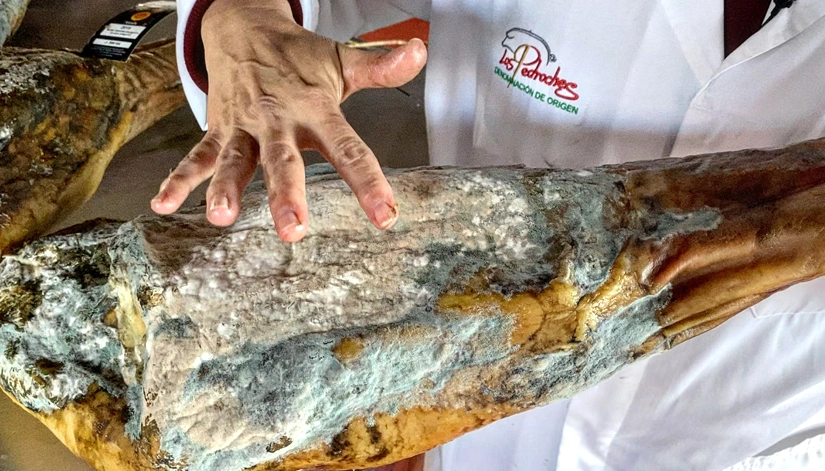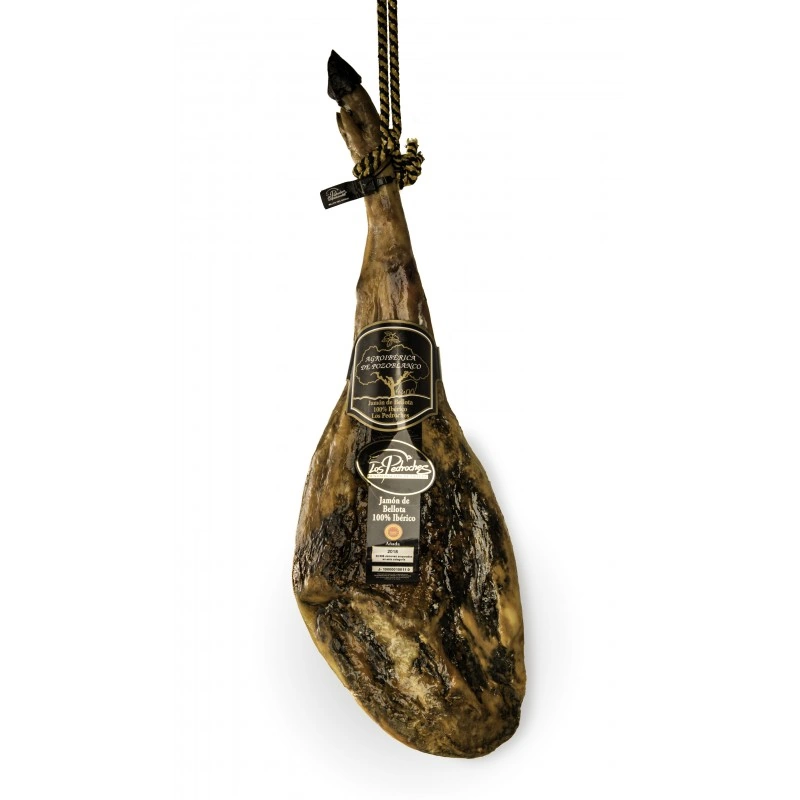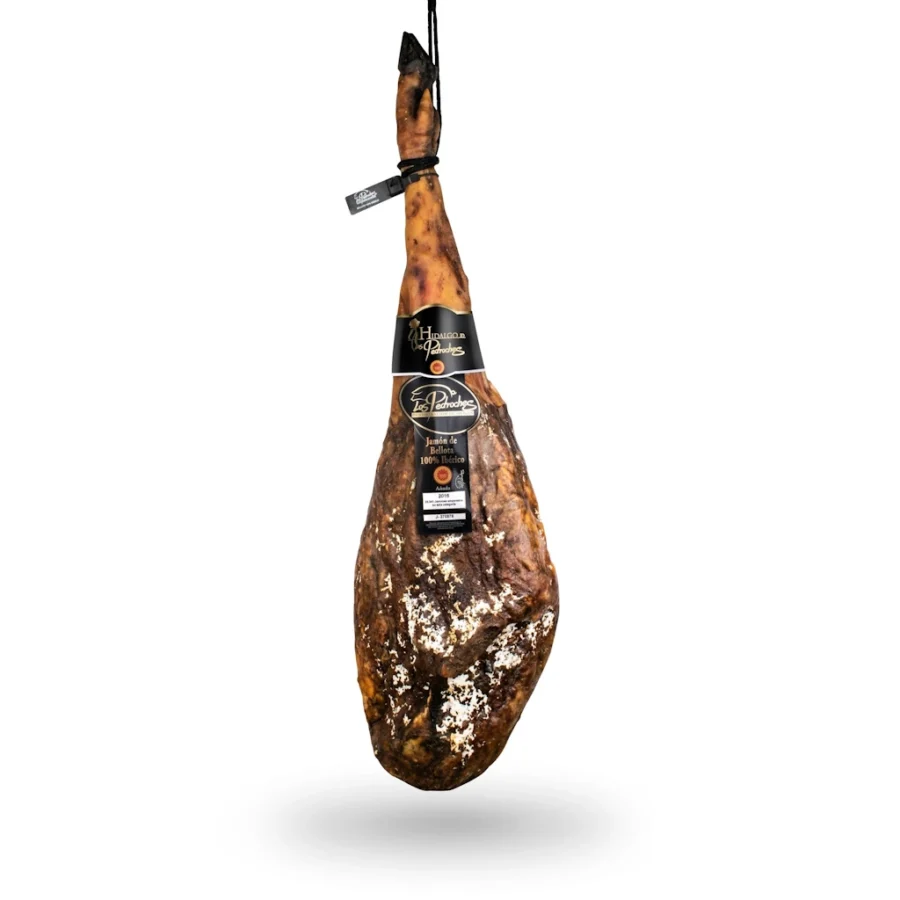Mold on ham: Why? What is it?
Indice

Mold on Ham: A Sign of Traditional Curing
Why does mold appear on our ham? Should we be worried? How can we eliminate it and, most importantly, how can we prevent its reappearance? At jamonibericodebellota.com, we understand that the presence of mold on a ham can raise concerns. However, far from being a problem, this natural phenomenon is usually an indicator of slow, natural, and traditional curing, a seal of quality that speaks to the care and attention devoted to each piece.
Demystifying Mold on Iberian Ham
Have you ever come across a thin layer of mold on the surface of your prized ham? Don’t worry, there’s no cause for alarm. This layer, often whitish or greenish, is a key factor in the maturation of a quality Iberian ham.
Why does my ham develop mold?
Several factors can lead to the appearance of mold on ham:
- Extended packaging: A ham that has just arrived at your home needs to breathe. Keeping it wrapped in parchment paper and a casing for too long can encourage moisture and, therefore, mold growth.
- Humid environment: A high-humidity environment is an ideal breeding ground for fungi.
- The curing process itself: In many cases, the presence of mold is an intrinsic and beneficial part of the ham’s natural curing process.
Mold on Ham: Friend or Foe?
Definitely a friend! During slow curing, surface mold acts as a natural fat stabilizer, contributing to a healthier and more authentic maturation process. This mold, which is generally superficial, does not penetrate the interior of the piece nor does it pose any risk to our health. In fact, its presence is a sign of prolonged, artisanal curing.
Removing Mold: A Simple Process
While mold is not harmful, we understand that its appearance may not be the most appetizing. Removing it is very easy:
- Moisten a clean cloth (preferably lint-free) with a little olive oil.
- Gently wipe the cloth over the areas where the mold is present until it disappears completely.
Prevention: The Key to a Flawless Ham
Once cleaned, the goal is to prevent mold from reappearing. Here are some essential tips:
- Proper Storage: Store your ham in a dry, dark place, away from direct sunlight and sources of moisture. A ham cover or even the ham’s own fat can be excellent allies.
- Strategic Cutting: Try to open the ham only on one side. Minimizing the exposed surface reduces the chances of mold growing.
- Natural Protection: Save some pieces of the ham’s initial fat and use them to cover the cutting surface after each use. This fatty layer acts as a natural protective barrier without altering the flavor. Then cover with a clean cotton cloth.
- Hanging for optimal preservation: If you’re not going to consume the ham immediately, keeping it hanging promotes better aeration and preservation.
The Language of Mold: Colors that Speak of Curing
Interestingly, the type of mold that appears on the ham and its color can offer clues about the curing phase:
During the post-salting or settling phase, it’s common to find molds of the Penicillium genus, which thrive in low temperatures and high water activity. These usually appear whitish and adhere to the lean meat.
During the drying phase, as the temperature gradually increases, strains of Aspergillus may appear, manifesting as a green color and a velvety texture. Both Penicillium and Aspergillus are the most common mold genera found in cured ham cellars, although others may exist. Their presence, although visually unappealing, plays a fundamental role in developing the unique texture and flavor of Iberian ham.
At jamonibericodebellota.com, we value every stage of the curing process, and the presence of mold is often a confirmation that we are following traditional methods that guarantee the excellence of our hams. So, the next time you see that subtle coating on your ham, remember it: it’s a sign of authenticity and flavor.
Nota importante: aceitedelcampo.com promueve el consumo del aceite de oliva virgen extra por sus cualidades culinarias y beneficios para la salud. No obstante, no debe sustituirse ningún medicamento o tratamiento actual sin la orientación de un profesional de la salud.



